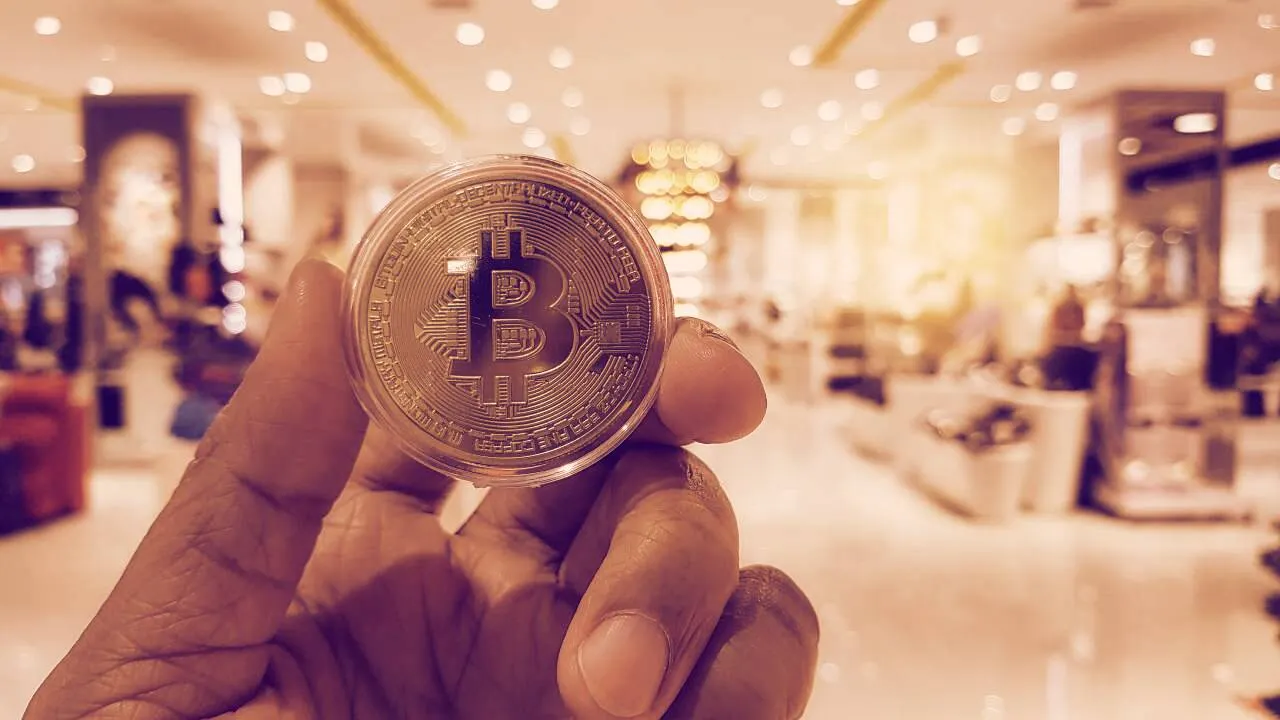In brief
- Bitcoin was originally billed as "a peer-to-peer electronic cash system," but most cryptocurrencies aren't used for payments.
- Surveys have shown that the majority of Bitcoin is held for speculative purposes.
- While some retailers accept Bitcoin, purchases have suffered from higher drop-out rates than cards and cash payments.
Bitcoin is the largest cryptocurrency by market cap. And from its inception, it’s been heralded as a form of digital cash; the replacement to the US dollar, the Chinese yuan and the British pound. Indeed, the original Bitcoin whitepaper by Satoshi Nakamoto describes it as a “peer-to-peer electronic cash system.”
But over a decade after its launch, the promise that shoppers would be happily using their Bitcoin addresses for payments in stores rings hollow.
To be clear, people do use Bitcoin and other cryptocurrencies to buy goods and services; it’s just that just the extent to which Bitcoin is used as a means of payment is dwarfed by its usage as a speculative investment, according to available data.
In a recent report titled 2020 Geography of Cryptocurrency, blockchain investigations firm Chainalysis found that 1% of cryptocurrency value sent to Africa came from merchants between June 2019 and July 2020. In China, that figure was 0.7%; in Eastern Europe, 0.84%; in Latin America, 0.96%; in the Middle East, 0.65%; in North America, 1.04%; in Europe, 1.08%.
And in May 2019, data from Chainalysis shows that just 1.3% of cryptocurrency transactions came from merchants between January and April of that year.
We're excited to announce that our Geography of Cryptocurrency report is now available! Download for 100+ pages of data-driven research into regional differences in cryptocurrency adoption and usage, plus interviews from experts! https://t.co/tznlS3QY90 pic.twitter.com/zTC3w0fKI3
— Chainalysis (@chainalysis) September 16, 2020
Looking specifically at Bitcoin, Chainalysis’s Market Intel platform shows that, in one week in September 2020, $62.5 million in Bitcoin went from services to exchanges and $53.9 million went from wallets to services. By comparison, $1.3 billion traveled between wallets.
That said, as Ryan Reiffert, a Texan business lawyer who represents startups and investors, told Decrypt, “just from looking at the ledger, it is essentially impossible to tell the difference between purchase transactions and investment transactions.” And even looking at businesses proclaiming to accept Bitcoin “will leave out all the independent contractors who might if asked, or those who don't advertise that they do.”
Why aren’t people using Bitcoin for transactions?
But using the available data as a benchmark, why isn’t Bitcoin more popular as a payment method?
It’s not that merchants don’t accept Bitcoin. A survey of 500 small and mid-sized businesses in the US by Zogby Analytics on behalf of HSB found that 36% accept cryptocurrency. And large organizations, such as Wikipedia, Microsoft and AT&T, accept Bitcoin.
And again, people do still buy things in Bitcoin. A spokesperson for Utah-based CoinZoom, which offers a crypto credit card, told Decrypt that customers have spent about $200,000 in Bitcoin each month for the past three months.
And Atlanta-based BitPay, a payment service provider that lets merchants accept Bitcoin, told Decrypt that the company processes $1 billion in Bitcoin payments each year.
But Bitcoin is far from mainstream. By comparison, in the first fiscal quarter of this year, Visa processed $2.3 trillion. So what’s causing the hold up for Bitcoin?
One reason: Bitcoin is still confusing.
Akram Tariq Khan, cofounder of YourLibaas, a Pakistani online fashion shop, told Decrypt that he added Bitcoin as a payment method during the pandemic, but out of about 12,200 orders in the following month, just 16 paid using Bitcoin, totaling just $2,100; another 127 tried, but gave up. “A higher drop-out rate due to offering Bitcoin as a payment method compelled us to discontinue its usage,” he said.
Perry Toone, founder of Thexyz, a Canadian private email hosting company that accepts Bitcoin, told Decrypt that Bitcoin is “not overly convenient for buyers,” though its usage has slightly grown among the “small amount of people that use it.”
Another possible reason? “There is still a stigma that Bitcoin is used on the online black markets, so the businesses that accept this kind of currency are often seen as dodgy and untrustworthy,” said Ethan Taub, CEO of California-based loans company Loanry.
Indeed, one of the first genuine use cases for Bitcoin was to buy illicit goods and services on dark web markets, like the now-defunct Silk Road.
Green shoots for Bitcoin?
But there’s still hope for Bitcoin, which, to cut it some slack, has only been around since 2008. Bitpay surveyed four merchants that accept Bitcoin and found that people spending crypto spend twice as much as they do when paying in credit cards.
And projects such as the Lightning Network are aiming to resolve pain points like the speed and cost of transactions—though at this point, the vast majority of crypto companies don’t yet accept Lightning transactions.
But for now, Bitcoin will remain a speculative investment. According to Chainalysis’s data, 17.2 million of the 18.5 million Bitcoin in circulation, or 93%, have remained in wallets for over two weeks, and 57% for over a year. What can prevent them from HODLing?

